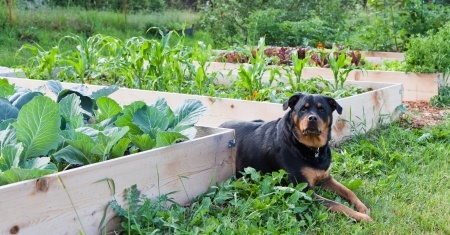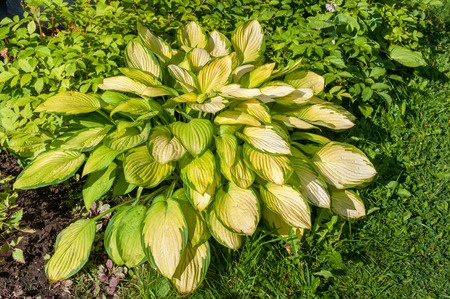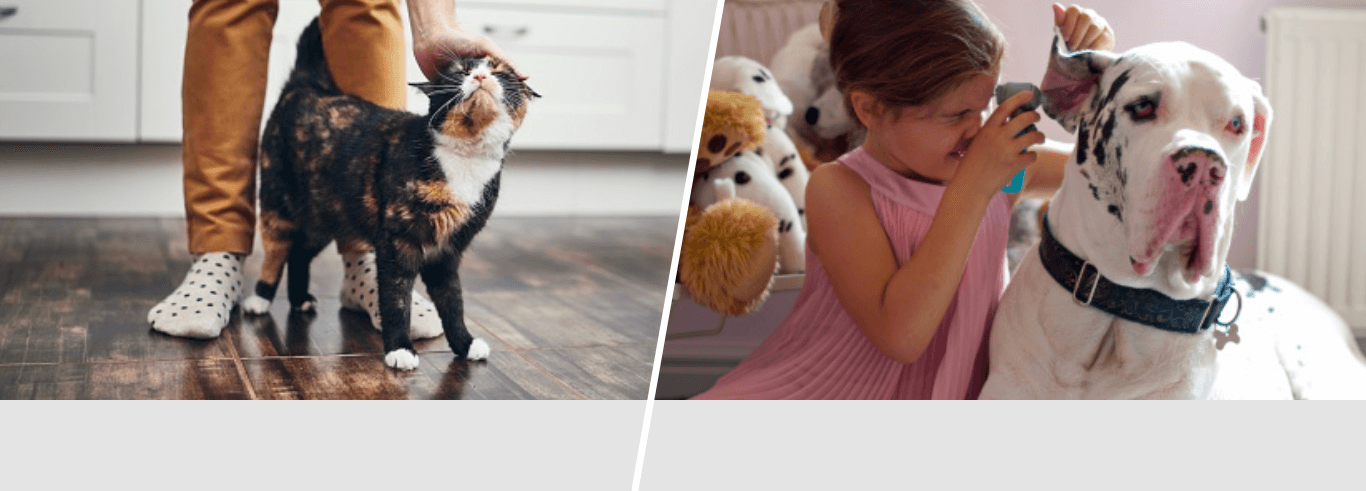What plants are poisonous to dogs and cats?
During the summer months it’s likely both you and your pets will want to be out in the garden more to enjoy the warmer weather. But did you know the average garden is packed with poisonous plants for dogs and cats?
Whilst keeping your pet away from poisonous plants is far from easy, especially if your dog or cat has a habit of roaming far and wide, here are a few species to keep an eye out for closer to home.

Which are the most poisonous plants for dogs and cats?
Rhododendron, Begonia, Chrysanthemum, Cyclamen, Hosta, Ivy and Lilies are just a selection of the most poisonous plants for dogs and cats, see below to find out more details:
- Rhododendron: Not only is this toxic to cats and dogs, it can also be dangerous for horses. Eating just a few leaves can cause digestive problems, excessive drooling, loss of appetite, diarrhoea, depression and even a loss of coordination. In severe cases, it can cause a weak heart rate and result in death.
- Begonia: A popular and versatile summer plant, these will cause intense burning and irritation in the mouth if eaten by dogs or cats. Ingestion will also cause excessive drooling, vomiting and possibly make your pet have difficulty swallowing.
- Chrysanthemum: Some dogs and cats can be drawn to its unique smell and, in certain cases, digesting it can cause vomiting, depression and a loss of coordination.
- Cyclamen: This plant’s root is very toxic to dogs and cats, so if your pet likes to dig and you have these in your garden, look out for intense vomiting. In some cases, fatalities have been known to happen if eaten.
- Hosta (pictured above): Its leaves, flowers and roots are poisonous to cats and dogs, so make sure your pet does not take a fancy to them. If they do, expect to see signs of depression, followed by vomiting and diarrhoea.
- Ivy: Only certain types are dangerous, including California Ivy, Branching Ivy, Glacier Ivy, Needlepoint Ivy, Sweetheart Ivy and English Ivy. Eating it will cause vomiting, hypersalivation and diarrhoea.
- Lilies: Highly toxic to cats, even in small quantities, eating these can cause kidney failure. In stark contrast, they are not toxic to dogs.
- Tomato Plant: Eating them won’t prove fatal for your pet, but they can give dogs and cats severe stomach pain, diarrhoea, drowsiness and slow their heart rate. Dilated pupils are a way to recognise if your pet may have eaten them.
- Tulip: This plant’s bulb has a high amount of toxins in it, so if you have a dog which likes to dig, keep a close eye on them. Convulsions and cardiac abnormalities can occur if this has been ingested.
- Daffodils: Although this flower is a spring addition in the garden, its bulb is most the most toxic part and can cause diarrhoea, low blood pressure and tremors if digested.
Is there an official list of poisonous plant species for pets?
Obviously, the above list is by no means exhaustive and the number of plants which can prove harmful to your pet depends on which type of animal you have. But dog owners can refer to a comprehensive directory of poisonous plants for dogs, which has been compiled by the Dogs Trust. Cat owners may want to refer to a similar inventory which has been put together by International Cat Care, a charity seeking to improve the quality of care for all cats.
Non-toxic plants for pets
So, which plants are not poisonous for pets? Although the list of poisonous plants for your dog or cat seems to be a long one, don’t worry, there are plenty of plants that are deemed as ‘safe’ for your pets.
However, it is important to note that any kind of plant digested by your beloved animal could cause some kind of upset in their tummies; they are like humans, everyone has different reactions to different things. Below is a list of plants that are renowned for being safer plants in your pet friendly garden:
- African daisies: like the common daisy, these beautiful plants have smooth and flat petals and look wonderful planted in the garden.
- Alyssum: this fast-growing plant is perfect to tuck into flower beds and great if you like to attract beneficial insects to your garden.
- Rose: a woody perennial flowering plant that can grow in abundance in your garden as shrubs.
- Celosia: an eye-catching, annual plant that bloom all summer long.
- Common Snapdragon: a brightly coloured and versatile plant that can shoot up to 1.2 meters tall.
Non-toxic house plants for cats and dogs
Houseplants are becoming increasingly popular and there’s no surprise as they can have great purifying benefits for your home. However, popular plants such as Aloe Vera and English Ivy can cause vomiting, diarrhoea and abdominal pains for your little pets.
Luckily, there are some houseplants that are considered safer for your animals. Below is a list of these non-toxic common houseplants:
• Boston Fern
• Christmas Cactus
• Bromeliad Neoregelia
• Echeveria Succulent
• Areca Palm Tree
• Sempervivum Ruby Hearts Succulent
• Aspidistra Elatior
We would always recommend to research into both indoor and outdoor plants before purchasing them and planting them around your garden or home.
It’s important to keep your pets away from poisonous plants, as is remembering to keep yourself protected from unexpected vet bills with Argos Pet Insurance provided by Pinnacle Insurance plc. Explore our pet insurance policies today.





